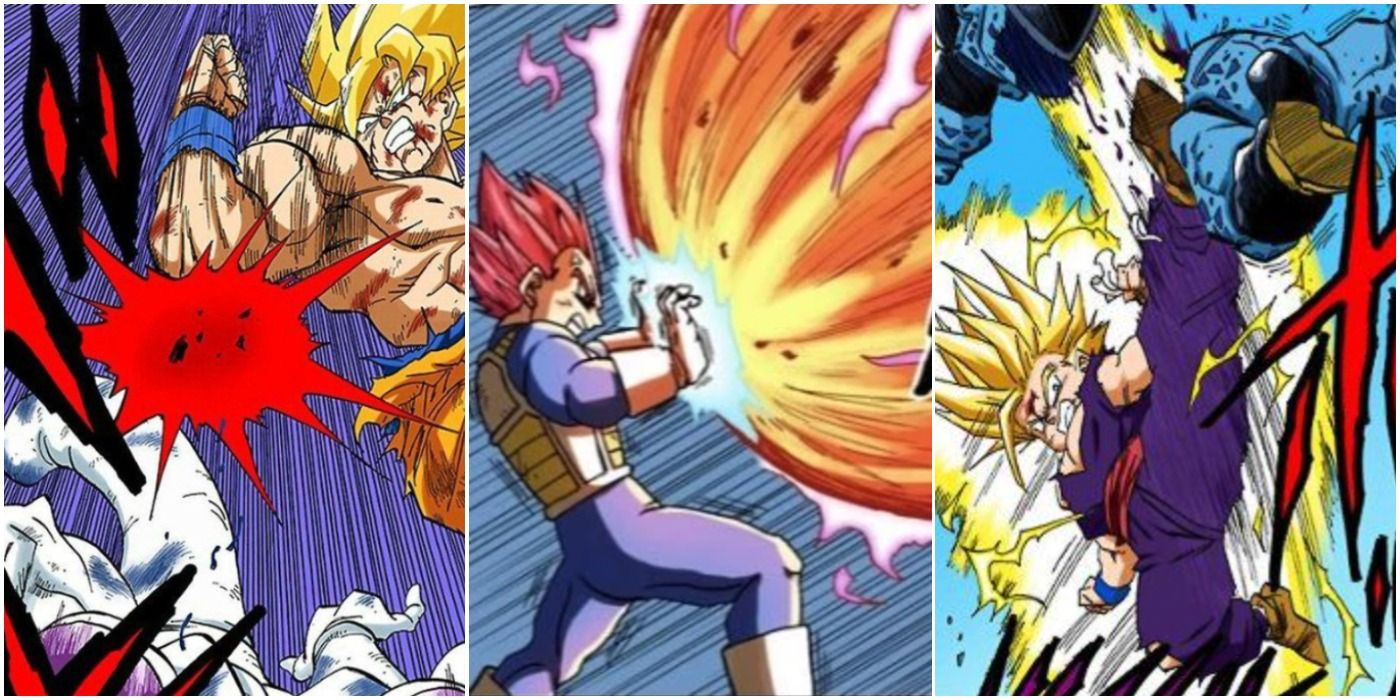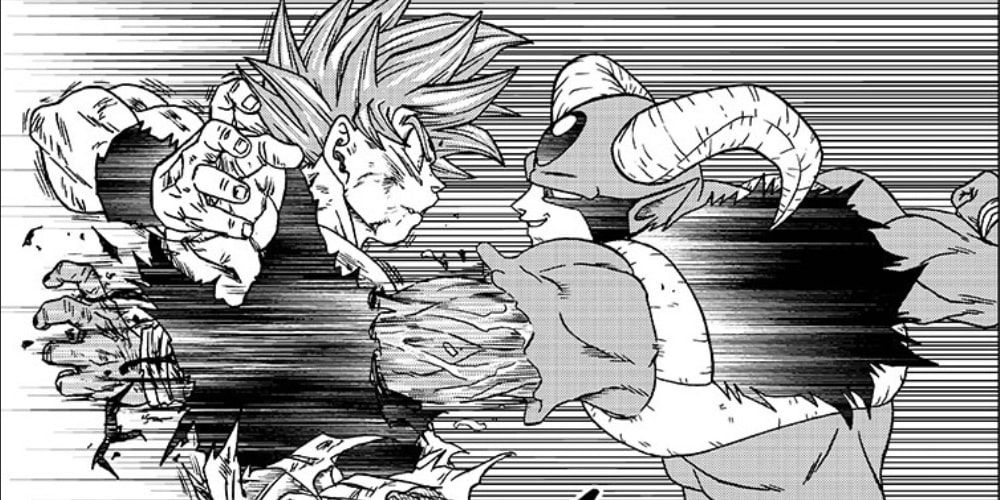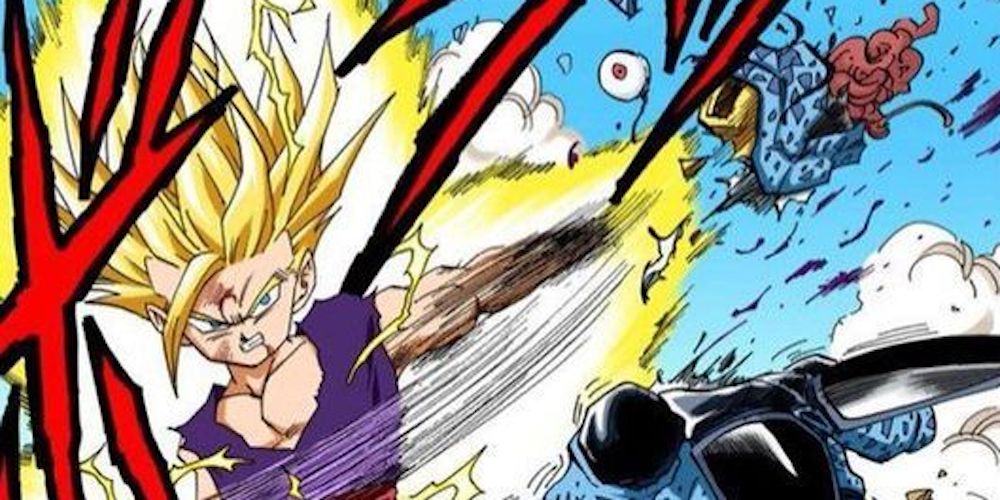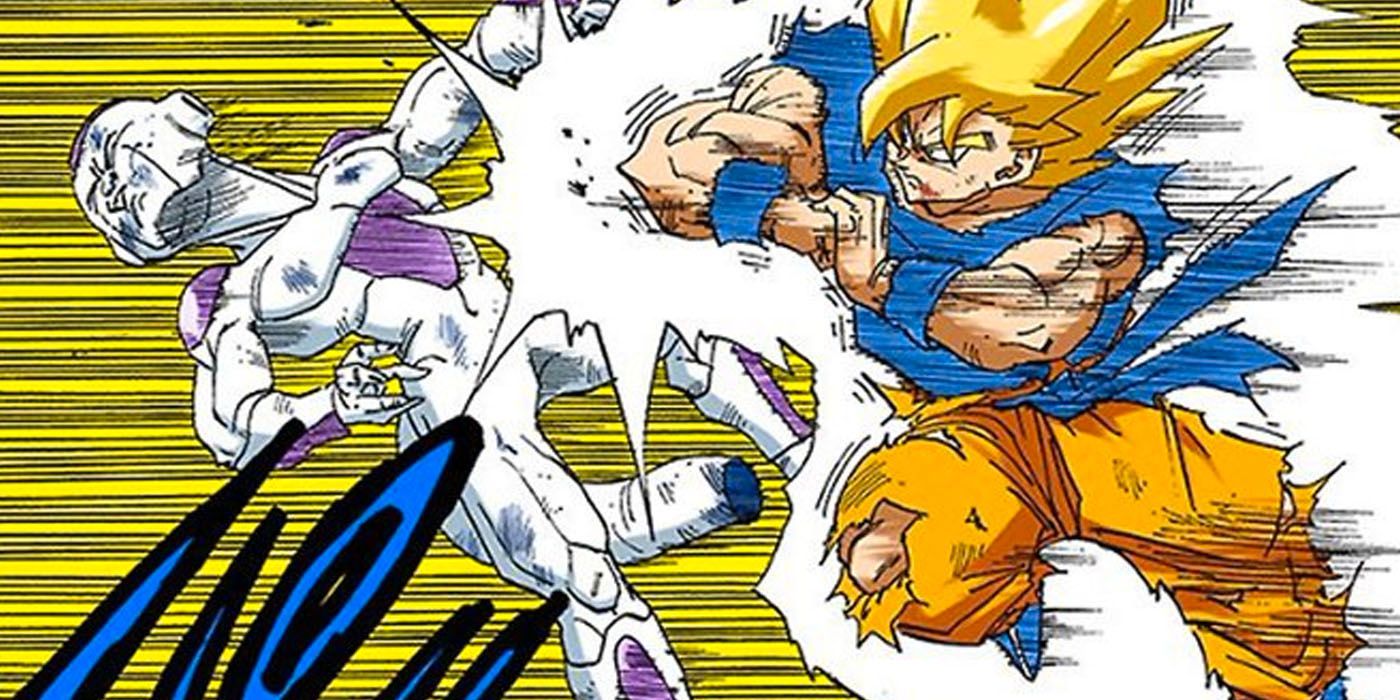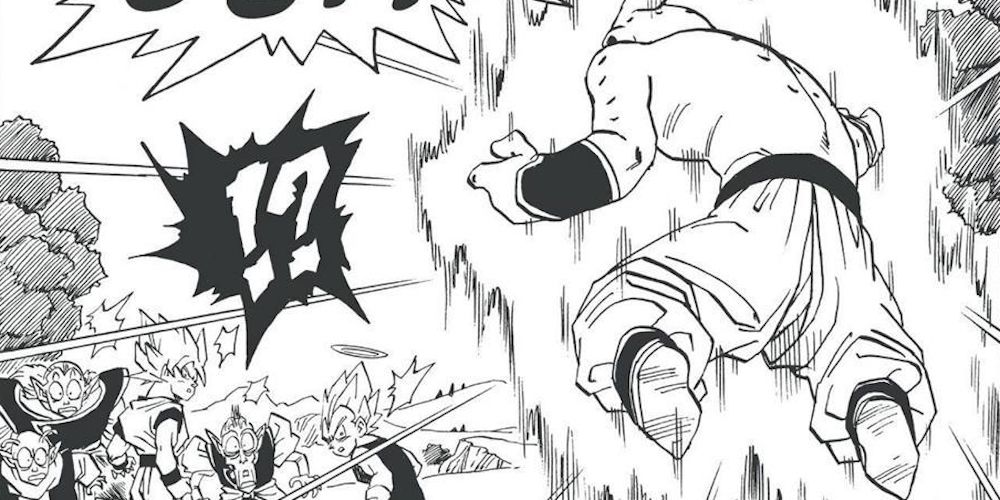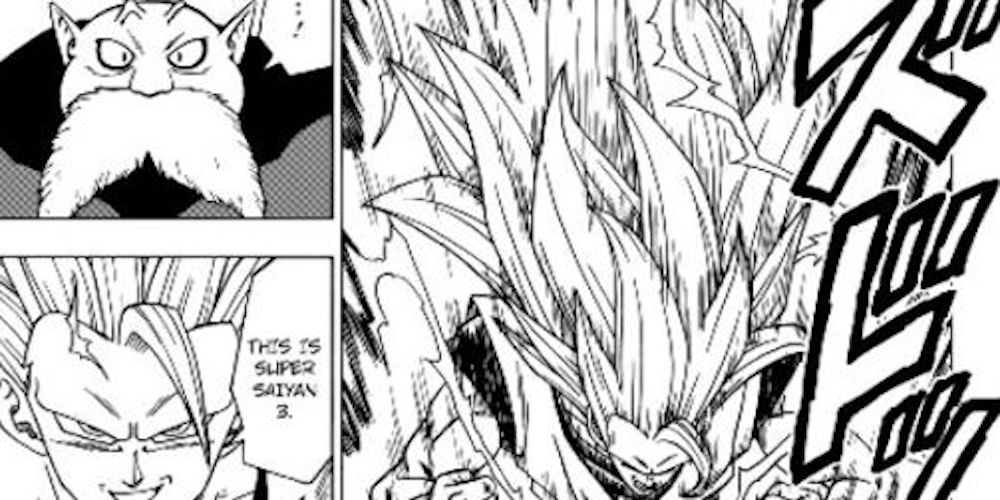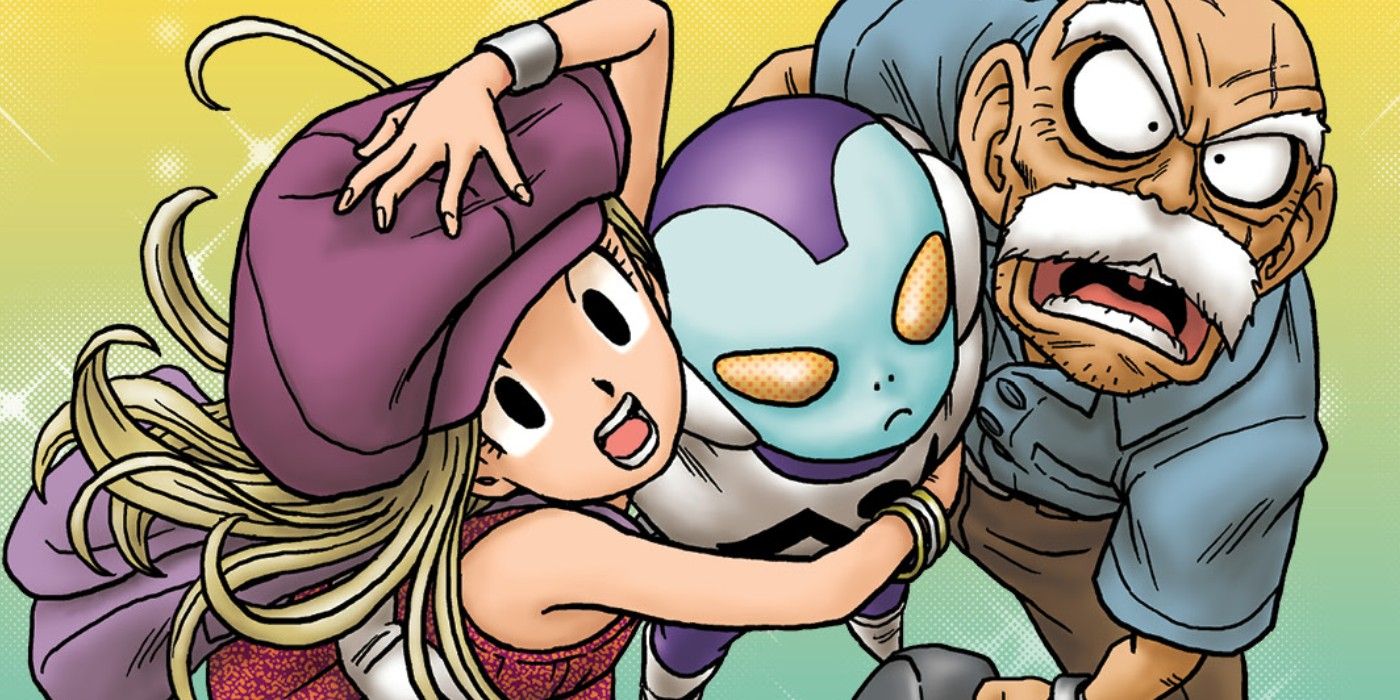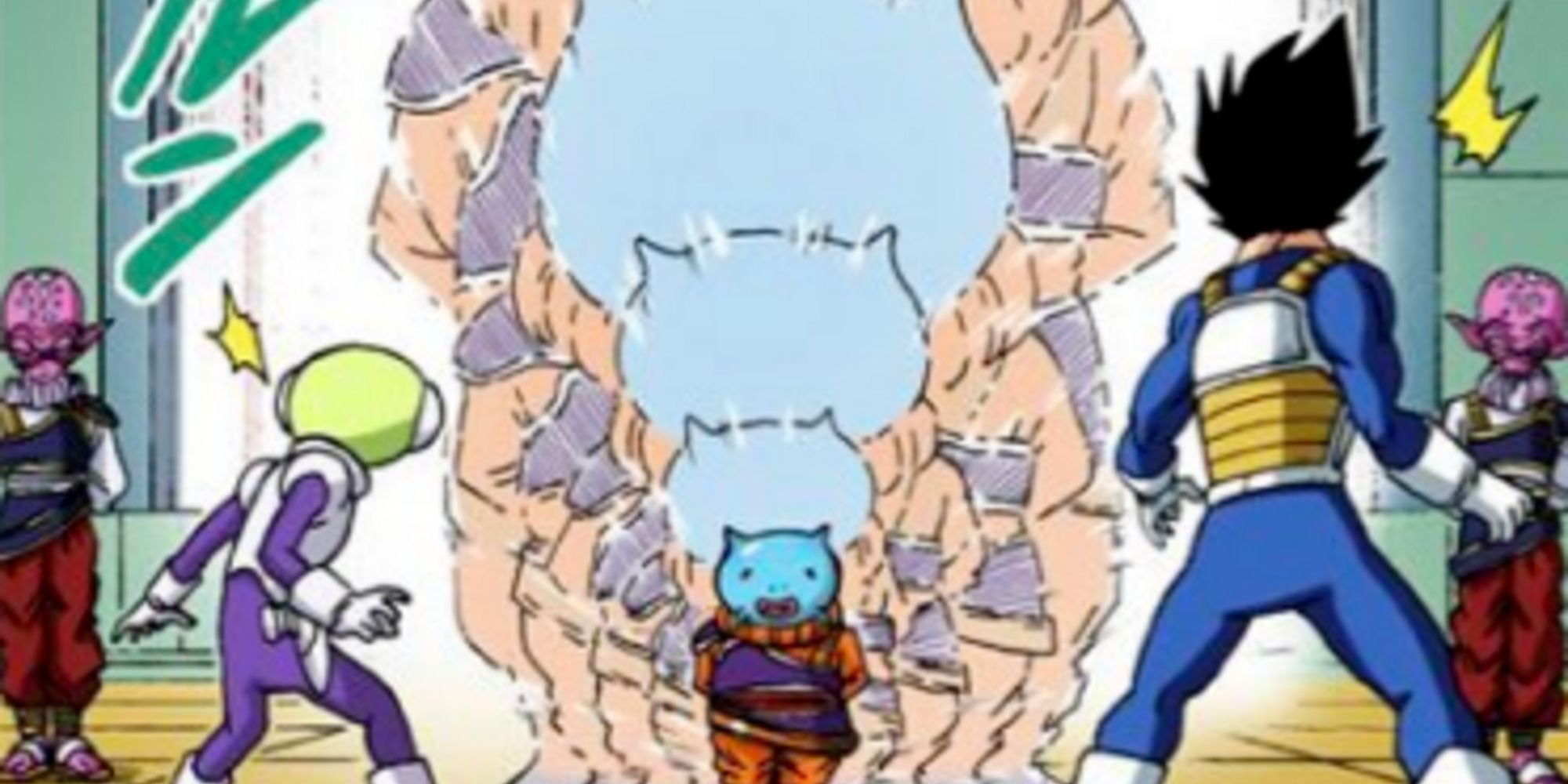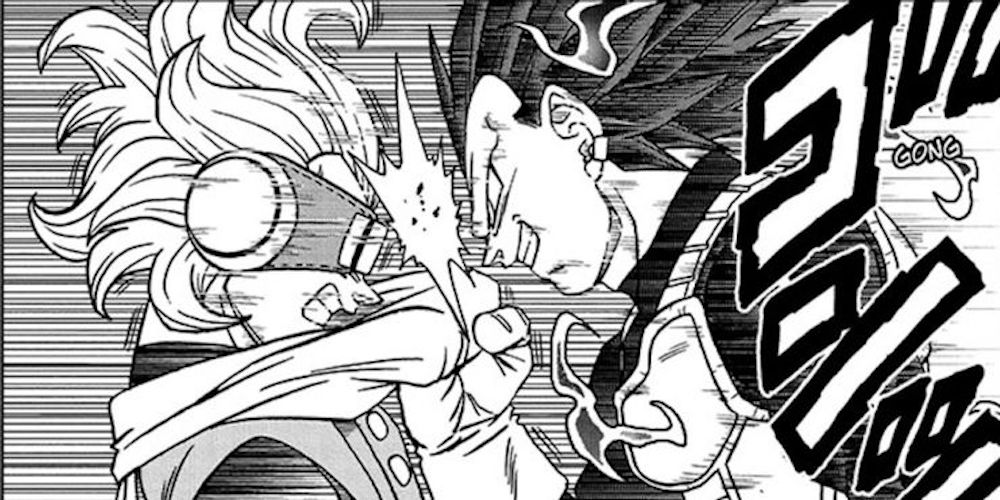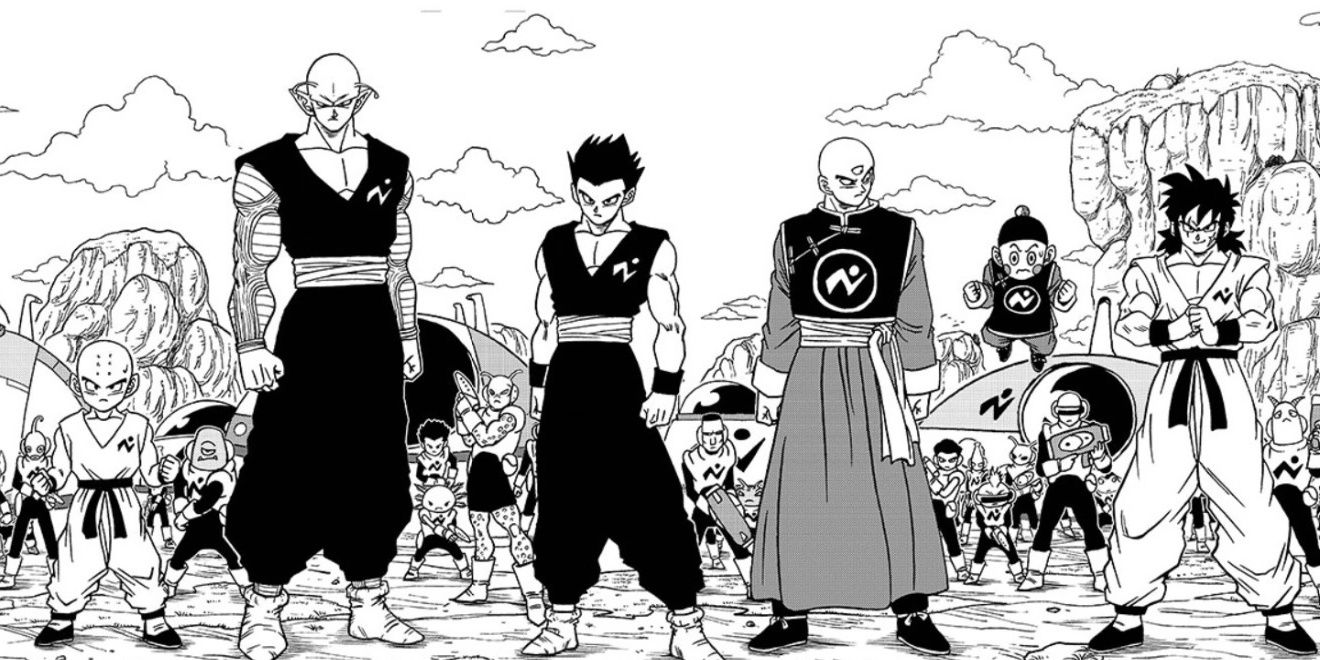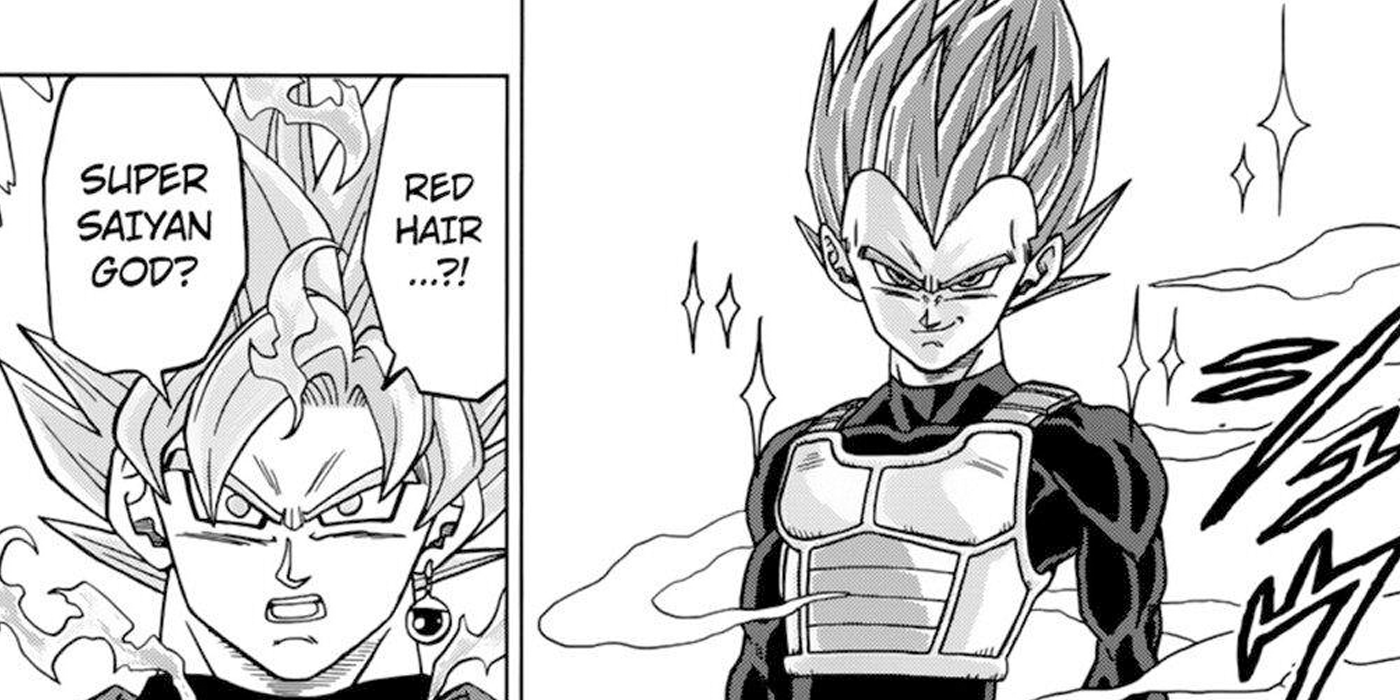Akira Toriyama’s prolific Dragon Ball is more than 35 years old, but it’s still one of the most popular shonen series that doesn’t struggle to hold its own against the latest anime hits. There’s a true sense of progression that’s felt throughout Dragon Ball’s story as Goku slowly matures from child to adult while becoming one of the universe’s strongest fighters along the way.
Dragon Ball’s anime plays a major role in the series’ success, and it helped bring a lot of new fans over to the original manga. There’s a certain joy to be had, watching Toriyama’s incredible stories and battles coming to life through animation, but there are several areas in which the manga actually surpasses the anime.
10 The Art Is More Consistent
Anime episodes are created by dozens, if not hundreds of people, which allows the animated medium to reach a height that’s just not possible with a manga’s static images. However, anime series can operate on rushed production schedules, causing some episodes to feature major dips in quality. This happens on more than a few occasions with various Dragon Ball anime. Alternatively, Akira Toriyama’s original manga art is meticulous, detailed, and consistent across the board. The same is true for Toriyama’s successor, Toyotarou, who’s created gorgeous splash panels and images for Dragon Ball Super’s manga.
9 There’s More Graphic Violence
There are plenty of brutal moments and vicious death scenes that occur throughout Dragon Ball’s anime, but the standards and practices that apply to television are not the same as the level of censorship that’s applied to manga. There are some aggressive acts of violence in the anime, but it’s never too gratuitous, and there are even edited versions that exist to make the content even more suitable for younger audiences. This degree of interference is absent in the manga, and the intensity of certain violent acts, like Gohan’s assault on the Cell Juniors, hit harder.
8 The First Super Saiyan Transformation Feels More Powerful
One of the most exciting moments in the entirety of Dragon Ball is Goku’s initial Super Saiyan transformation during his battle against Frieza on a volatile Planet Namek. The weight of this milestone is felt in the anime, but the extended nature of this fight leads to Frieza temporarily holding his own against the Super Saiyan after he boosts his power.
In Dragon Ball Z’s manga, Frieza is hopelessly overpowered as soon as Goku unveils this new transformation. This makes it truly feel like Goku has achieved an unmatchable level of strength.
7 There’s Better Pacing In Fights
It’s remarkable how manga can create such engaging stories and action-packed visuals that they’re able to convey the illusion of movement even though the drawings are stationary. It can be much more challenging to properly stage a fight in a manga as opposed to its anime equivalent. However, a common issue is that the anime extends battles and adds unnecessary material to the showdowns. Dragon Ball’s manga distills all of its battles down to only what’s necessary and doesn’t need to adhere to the runtime of an anime episode. The Tournament of Power, in particular, is paced much better in Super’s manga.
6 There’s Better Attention Paid To Power Levels And Avoiding Power Creep
Dragon Ball’s characters have all grown so powerful that the destruction of an entire planet is essentially a warm-up exercise for them. Dragon Ball likes to inform the audience of just how strong everyone is, especially during its early chapters, which allows competitive rivalries to thrive. Dragon Ball’s anime gets a little overzealous in this regard, and its compulsion to have characters suddenly surpass reasonable limits or pull new transformations out of nowhere is exactly the type of “power creep” issues that audiences criticize the shonen genre for. Dragon Ball’s manga is more restrained here and doesn’t needlessly create spectacles without properly considering the consequences.
5 Its Ability To Tell One-Off Side Stories
There’s a lot more freedom in the medium of manga when it comes to one-shot stories and spin-offs that are able to explore corners of the universe that might not make sense to focus on in the main series. There are multiple instances where Toriyama has written shorter Dragon Ball stories that have become so popular that some have even received their own anime OVA adaptations.
Dragon Ball Minus and Jaco the Galactic Patrolman contain fascinating details regarding the larger Dragon Ball universe, but they’re absent elsewhere. There’s even an extra Dragon Ball Super chapter that marks the return of the Cell Juniors.
4 The Larger Universe Is Better Fleshed Out
It’s been fascinating to watch Dragon Ball expand its scope, leave the Earth, and explore a whole galaxy of different planets and important extraterrestrial species. Dragon Ball’s anime showcases the depth of its universe, but there’s still a lot that’s left up to the audience’s imagination. Dragon Ball’s manga finds more opportunities to fill in these gaps and provide compelling details, even if they’re contained to a single line of dialogue. Dragon Ball Super’s manga spends a healthy amount of time on Planet Yardrat to further develop their wise ways and take a deeper look at the different Gods of Destruction from across the multiverse.
3 It's Surpassed The Anime In Terms Of Its Story Arcs And Transformations
The original Dragon Ball and its sequel, Dragon Ball Z, started as a manga that was turned into an anime years later. Curiously, Dragon Ball Super made its premiere as an anime series, and its corresponding manga didn’t follow until later. Dragon Ball Super's anime has run its course and concluded with the Tournament of Power, yet Super's manga has progressed far beyond this point. Those that only stick with the manga have no idea about what’s gone on with recent villains, Moro, Granolah, and Gas, as well as Vegeta’s Ultra Ego transformation.
2 There’s Hardly Any Extraneous Filler
A crucial difference that exists between most manga and their anime counterparts is that long-running shonen series experience an abundance of anime filler to help properly pace themselves against the manga. Filler isn’t always a lost cause, and it sometimes introduces new characters that properly get incorporated into the series. But more often than not, they feel manipulative and disrupt the series’ story. Filler is specifically extra content that’s produced for anime, which means that it doesn’t exist in Toriyama’s original manga. Granted, there are some chapters that are more relaxed and unessential than others, but it’s the story that the author intended.
1 Super Saiyan God Makes More Of An Impact
It’s always an exciting moment of celebration whenever a new stage of Super Saiyan gets unveiled in Dragon Ball. The powerful transformation has gradually evolved over the course of the franchise, and the challenge that God of Destruction Beerus poses leads to the launch of Super Saiyan God. Super Saiyan God and its red hair and aura are a welcome change of pace, but Super's anime quickly moves past this milestone in favor of its successor, Super Saiyan Blue. Super Saiyan Blue becomes the norm, but the manga actually turns to this transformation more often and better explains its utility and differences from Super Saiyan God.

